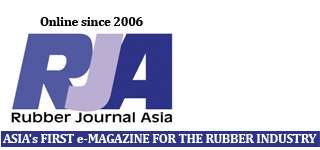Tyres & Accessories reported that Dr. Hidde P. Smit, former secretary general of International Rubber Study Group and rubber market analyst, suggested tree-felling and reduced tapping in order slow falling NR prices.Rubbertree
Smit’s comment came during his keynote address at the recent India Rubber Summit & Dinner 2014. Organized by Rubber Asia magazine, the sixth annual program was hosted in Kochi, India, on Sept. 21.
In his talk, Dr. Smit predicted that low NR prices could continue for the rest of the decade and even beyond, and that any intensive rubber planting done now could lead to a glut in the market within seven years, bringing the prices down further.
World NR consumption is expected to reach 18.6 million tons by 2025, while NR supply may exceed demand at 19.3 million tons by 2025 and 20.2 million tons by 2030. Indian producers need to consider taking trees out of play in order to raise pricing levels going forward.
There were some who disagreed with Dr. Smit. Sheela Thomas IAS, secretary general of the Association of Natural Rubber Producing Countries (ANRPC) and former chairman of India Rubber Board, said steps are being taken to stabilize prices, but it is equally important to raise the income of smaller rubber plantations. Vinayaraghavan said the Price Stabilization Fund of the India government has failed to serve its purpose and offered that there should be a Strategic Rubber Fund that addresses the concerns of farmers as a whole, instead of price alone.
Dr. James Jacob, director of the Rubber Research Institute of India, said India can’t produce NR as inexpensively as low-cost countries. “If we do not preserve the NR production base, there will be more imports. It is in national interest to import rubber if we don’t produce enough,” he said.
P. K. Mohamed, an advisor to Apollo Tyres, said there is too much focus on NR prices and issues such as raising the quality of rubber and R&D initiatives should get due attention of the industry.

